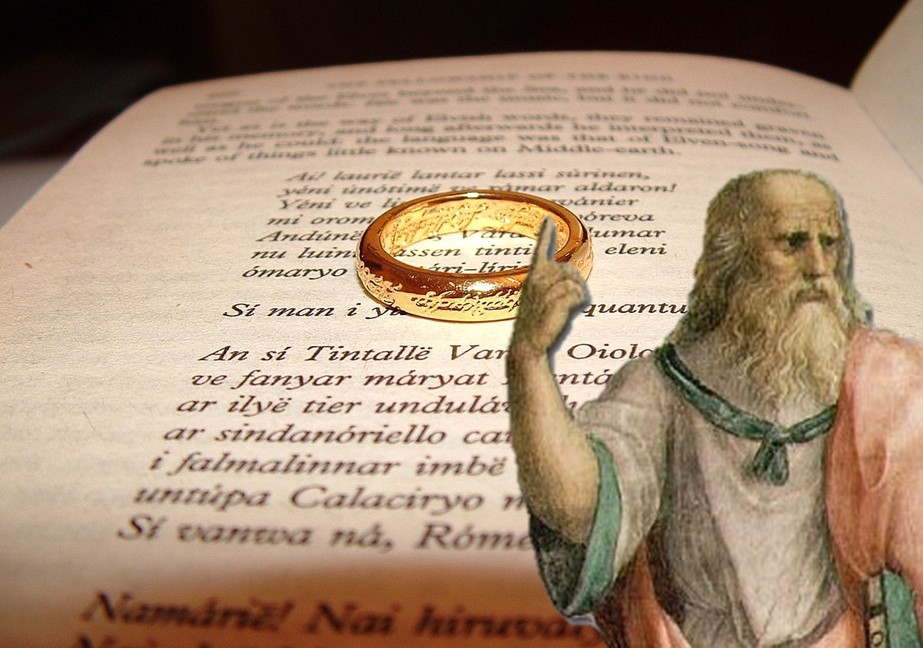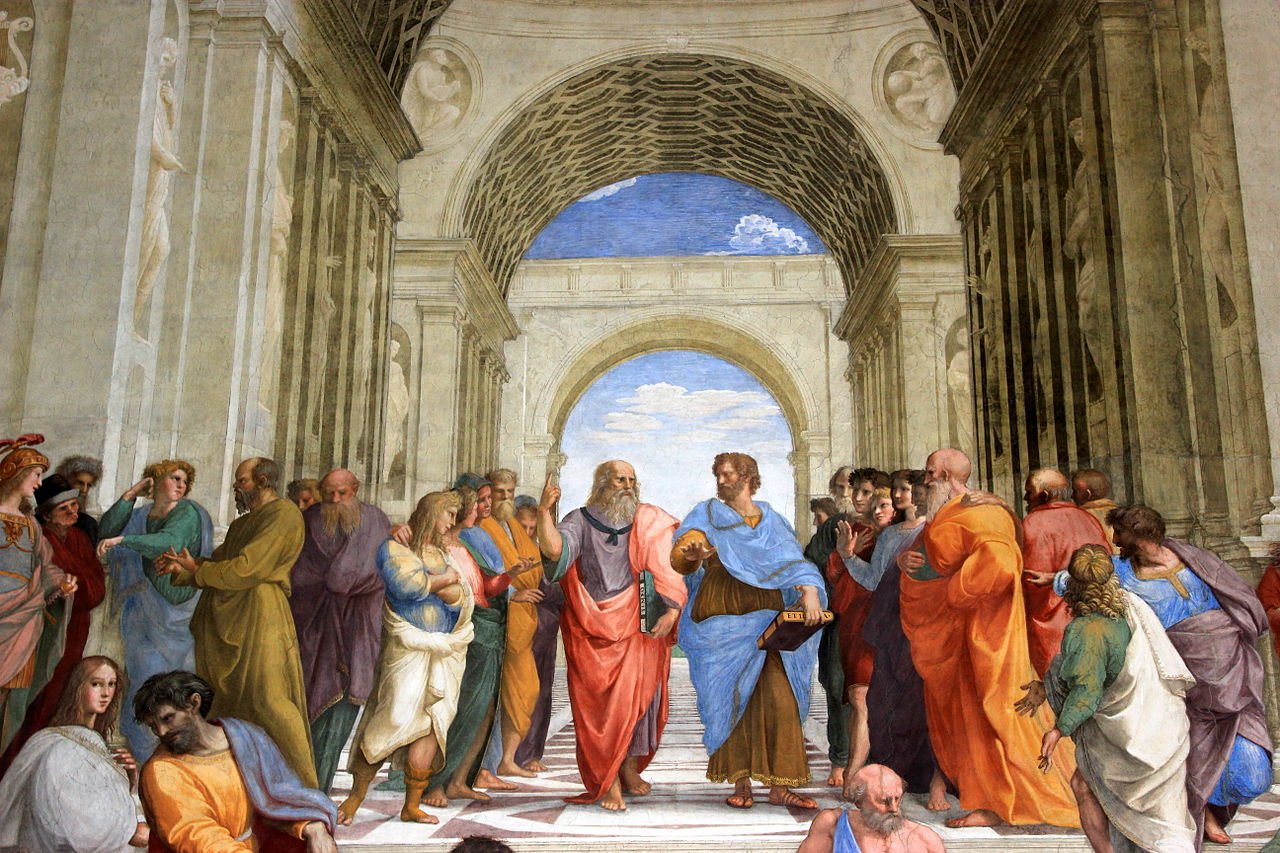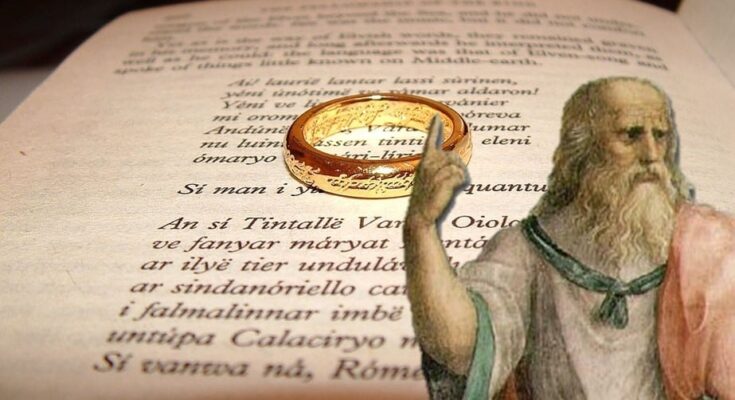
Few people would be quick to draw a connection between Plato and The Lord of the Rings, authored by epic high fantasy writer J. R. R. Tolkien. However, the ancient Greek philosopher’s hypothetical Ring of Gyges bears some striking similarities to Sauron’s One Ring.
In Plato’s allegory, just like Tolkien’s One Ring, the Ring of Gyges grants its wearer the power of invisibility. Both rings are also strongly associated with immorality, corruption, and temptation.
Plato’s allegory may have influenced other authors, including poets from medieval Germany and authors from Renaissance-era Italy.
Plato and the Lord of the Rings
The Ring of Gyges is described in Plato’s Republic during a conversation between the Greek philosopher and his brother, Glaucon. During the conversation, Glaucon recounts a myth about the legendary ring.
In the tale, a shepherd stumbles across a chasm in a mountainside where he was tending to his flock. The shepherd clambers into the chasm, where he discovers an enormous bronze horse containing the body of a giant man. On the giant’s finger is a ring, which the shepherd takes for himself.
Much like the One Ring in Tolkien’s tale, the ring the shepherd discovers grants the power of invisibility. The similarities do not cease there. The shepherd is seduced by the power of the ring to do evil, a lot like Gollum and other characters in The Lord of the Rings.
The shepherd uses the power of the ring to arrange a position for himself in the royal palace of Lydia. Turning invisible, he then seduces the queen and with her aid murders the king of Lydia and takes the throne for himself.
The main difference between the two rings is the way in which they push their wearers to do evil. The Ring of Gyges does not exude evil itself; rather, its wearer is tempted to act immorally on his own accord. Essentially, the ring grants the shepherd the power and ability to act out his most corrupt desires anonymously and without consequence, but these desires are entirely his own.
In The Lord of the Rings, the One Ring is imbued with the essence of the Dark Lord Sauron, the antagonist of the story. The One Ring has some limited will of its own and can subtly influence its wearer and other people. The degree to which the ring influences the behavior and morality of its wearer remains a point of debate between Tolkien scholars.

Did the Ring of Gyges influence Tolkien?
Tolkien did not directly reference Plato’s Ring of Gyges as an inspiration for The Lord of the Rings in any of his letters. It is therefore difficult to determine whether Plato’s allegorical ring was in the author’s head when devising the One Ring.
Tolkien was deeply influenced by the past. The mythology and history of his native England were foremost in his mind when he created Middle-earth, the setting of The Lord of the Rings, The Hobbit, and The Silmarillion.
Although the influences of Anglo-Saxon, Germanic, and Celtic mythology can be seen more clearly in his works, Tolkien was also heavily influenced by Greek mythology. The disappearance of the island of Númenor into the sea mirrors the watery fate of Atlantis, as told by Plato.
Tolkien even had a recurring nightmare about Atlantis. “This legend or myth or dim memory of some ancient history has always troubled me,” the fantasy author wrote in one letter. “In sleep I had the dreadful dream of the ineluctable Wave, either coming out of the quiet sea, or coming in towering over the green islands.
“It still occurs occasionally, though now exorcized by writing about it,” Tolkien continued. “It always ends by surrender, and I awake gasping out of deep water. I used to draw it or write bad poems about it.”

Allusions to the Ring of Gyges in other narratives
Plato’s allegorical tale may have influenced later German literature and epic poetry, according to academic David B. Dickens.
Hartmann von Aue was a German knight and poet, who lived in the twelfth to thirteenth centuries. Dickens posits that the medieval German author was probably aware of Plato’s allegorical ring of power when he wrote the Middle High German epic poem Iwein around the year 1200.
Iwein, the titular hero of the poem, is an Arthurian knight who embarks on many dangerous adventures. After several such encounters and a daring escape from a castle, Iwein is rewarded with a magical ring by the handmaiden Lunete. Like the Ring of Gyges, this ring grants Iwein the power of invisibility.
The epic poem Orlando Innamorato (“Orlando in Love”), by the Italian Renaissance author Matteo Maria Boiardo, may also have drawn from Plato’s allegory. Written in the fifteenth century, the story follows the chivalric adventures of the knight Orlando.
Much like the shepherd in Plato’s allegory, Iwein in Hartmann Von Aue’s tale, and several characters in Tolkien’s legendarium, the character Argalia receives a magical ring. This ring is given to him by his father, the king of Cathay. When carried in one’s mouth, this ring turns the user invisible. However, it does not do Argalia much good, as he is killed in a tournament.



